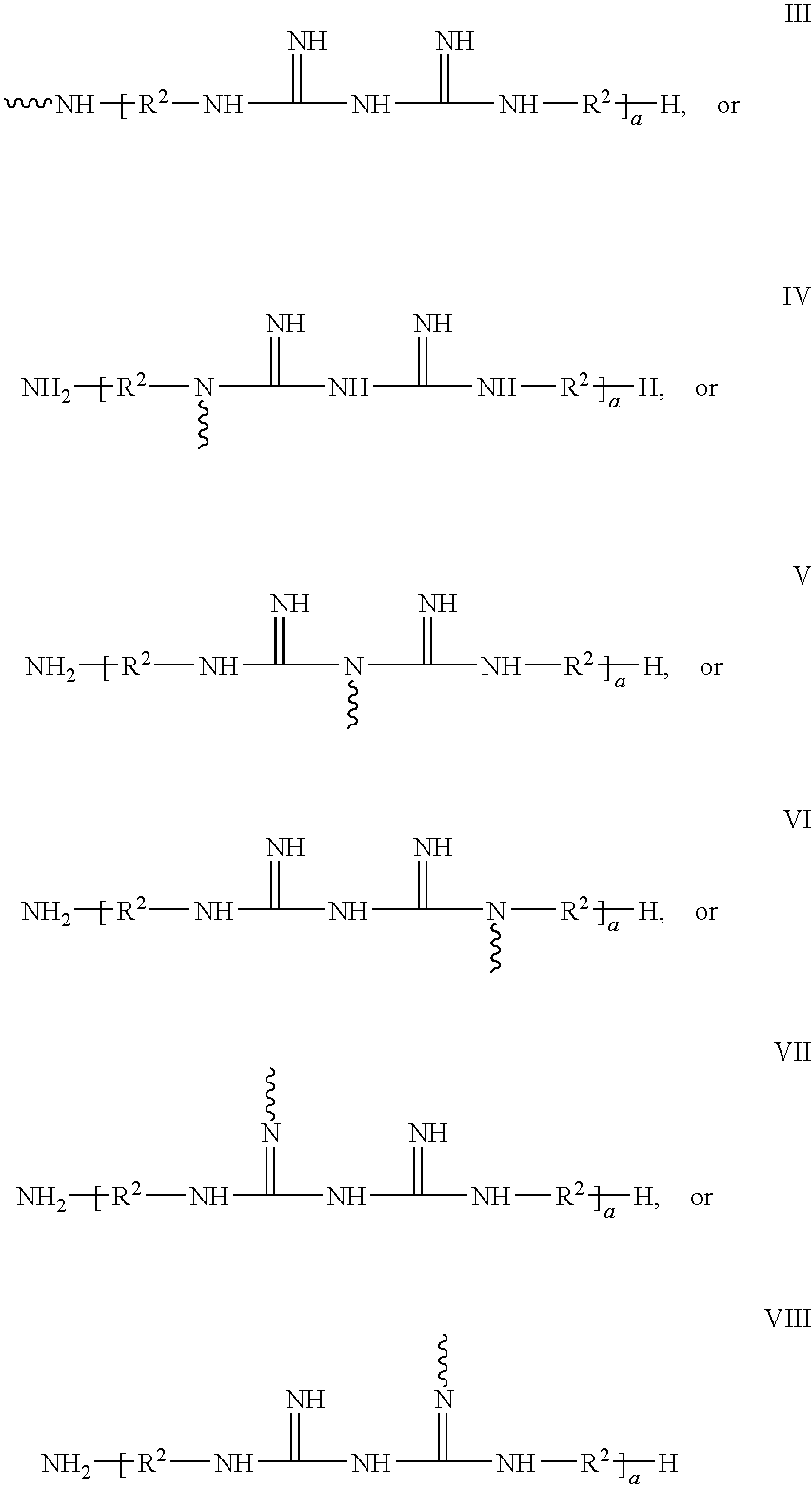Ligand Graft Functionalized Substrates
- Summary
- Abstract
- Description
- Claims
- Application Information
AI Technical Summary
Benefits of technology
Problems solved by technology
Method used
Image
Examples
example 1 and 2
Part A: Preparation of Substrate Membranes Having Grafted Electrophilic Groups
[0118]Grafting of the amine-containing ligands to the RC base membrane was effected by the following method. First, hydroxyl groups on the cellulose substrate were activated by reacting the membranes in a 5% allyl glycidyl ether (as the grafting compound) solution in 30% sodium hydroxide overnight at 22° C. The covalently attached allyl groups were converted to electrophilic bromo groups by bromination using a 10 g / L solution of N-bromosuccinimide for 2 hr.
Part B: Grafting of Functional Groups on Activated Membranes
[0119]Grafted bromo groups on the membranes made in Part A were replaced with amine ligands via nucleophilic substitution in which brominated membranes were reacted with amine ligand solution for 2 days at 22° C. to ensure high levels of amine substitution. Ligand solutions were as follows: 10% (w / w) solids in aqueous solution pH 11 for the polyethyleneimine (PEI) and polyhexamethylene biguanidi...
example 3
[0120]The PVDF porous substrate was imbibed with a solution containing 10.0 wt. % PEG 400 diacrylate monomer available from Sartomer Inc. of Exton, as PA SR344™ and 90.0 wt. % methanol. The coated porous substrate was then ‘wet’ between two layers of PET film (first layer and second layer) having a thickness of approximately 100 micrometers. A removable first layer and a removable second layer were each placed on opposite sides of the coated porous substrate with any excess solution and trapped air bubbles squeezed out with a hand held rubber roller. The multilayer structure was conveyed through the electron beam on a carrier web. The multilayer structure was irradiated by electron beam (E-beam) on an ESI CB-300 electron beam with a dose of 20 kGy set at a voltage of 300 keV. Two minutes following irradiation, the hydrophilic functionalized porous substrate was removed from the first and second PET layers. The membrane was soaked in a tray of water that was exchanged three times wit...
example 4
[0123]The following Example used the general procedures described in Applicant's copending application U.S. 2009 / 0098359, incorporated herein by reference its' entirety.
[0124]The PVDF porous substrate was imbibed with a solution containing 10.0 wt. % PEG 400 diacrylate monomer available from Sartomer Inc. of Exton, Pa. as SR344™ and 90.0 wt. % methanol. The coated porous substrate was then placed ‘wet’ between two layers of PET film (first layer and second layer) having a thickness of approximately 100 micrometers. A removable first layer and a removable second layer were each placed on opposite sides of the coated porous substrate with any excess solution and trapped air bubbles squeezed out with a hand held rubber roller. The multilayer structure was conveyed through the electron beam on a carrier web. The multilayer structure was irradiated by electron beam (E-beam) on an ESI CB-300 electron beam with a dose of 20 kGy set at a voltage of 300 keV. Two minutes following irradiation...
PUM
| Property | Measurement | Unit |
|---|---|---|
| Hydrophilicity | aaaaa | aaaaa |
| Thermoplasticity | aaaaa | aaaaa |
| Electrophilic | aaaaa | aaaaa |
Abstract
Description
Claims
Application Information
 Login to View More
Login to View More - R&D
- Intellectual Property
- Life Sciences
- Materials
- Tech Scout
- Unparalleled Data Quality
- Higher Quality Content
- 60% Fewer Hallucinations
Browse by: Latest US Patents, China's latest patents, Technical Efficacy Thesaurus, Application Domain, Technology Topic, Popular Technical Reports.
© 2025 PatSnap. All rights reserved.Legal|Privacy policy|Modern Slavery Act Transparency Statement|Sitemap|About US| Contact US: help@patsnap.com



